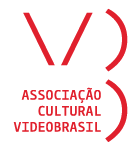PROJECT
The BRAZILIAN FILM AND VIDEO PRESERVATION PROJECT (BFVPP) focuses on the study, restoration, digital preservation and archival placement of moving image artwork created before 1985. Launched in 2015 by the Ostrovsky Family Fund (NYC), project goals also include serving as a hub for artists, critics, curators and scholars focused on the art, culture and politics of this era. BFVPP works in partnership with Electronic Arts Intermix (NYC) and Associação Cultural Videobrasil (São Paulo).
INCEPTION
Vivian Ostrovsky is an experimental filmmaker, curator and philanthropist based in NYC. Since the 1970s, as a principal at the Ostrovsky Family Fund, she has prioritized support for non-profit film venues; the production, distribution and promotion of experimental moving image artworks; for programs that nurture emerging artists and, an array of international art film archives. Tasked with an invitation to curate a film festival sidebar focused on early Brazilian film and video, she was surprised by the paucity of sources and access to titles. Also, she had recently digitized masters of her own films. She began to mull how to extend this opportunity to the artists whose legendary works that had inspired her and how best to ensure their works would be preserved, studied and made accessible in perpetuity. These concerns sparked her conceptualization of the Brazilian Film and Video Project and her role as Founder/Advisor.
PROCESS
The BFVPP was initiated to provide restoration and remastering for works by pioneering Brazilian media artists and to encourage understanding of their achievements and impact. Artists are invited to submit extant masters to be restored and upgraded into digital formats. These are provided to the artists and deposited in archives – one national, one international.
BFVPP intakes titles, oversees treatment, culls background on the media dimension of the artist’s practice, assembles filmographies, produces interviews with and about the artist and this era and commissions scholarly essays.
The site provides a glimpse of the preserved titles, links to complete versions and ancillary research. On-going BFVPP efforts and new developments, as well as topical exhibitions, events and publications are reported here and via the Instagram interface. To date 10 films have been restored.
FOCUS
In 1974, Jom Tob Azulay, returned to Rio following a diplomatic career and his film studies in Los Angeles. He brought back a Sony Portapak. The forty-pound, battery-powered, single-operator video camera had become the tool of choice to capture the in-the-streets political tumult of the times. Also, its features had caught the attention of many artists worldwide.
Azulay coached his artist friends on his new means for artistic expression and often acted a cameraman for their nascent productions. The artists immediately recognized the unique features and creative possibilities of video. Even those who had already absorbed 16mn and Super-8 filmmaking into their oeuvre, grasped this was something different. A spurt of experimentation ensued.
The promise of this new technology and the threatening political atmosphere paralleled the emergence of new forms for artistic expression, including digital technologies, intermedia performance and installation. These artists had established, celebrated practices focused on painting, sculpture and graphics, however most of the Brazilian art critics and academicians who had championed their output, initially resisted acknowledging their time-based works as Fine Art.
BFVPP sponsors original research and aspires to redress an Art Historical oversight. Seminal works by Brazilian artists were not only inspired by the international revolution of media art work. They were integral to it.


